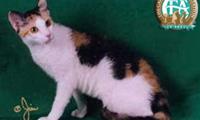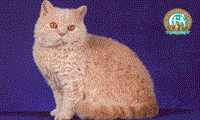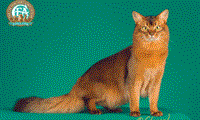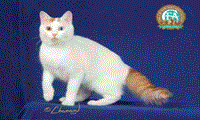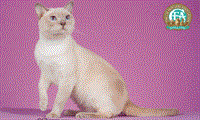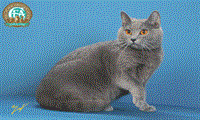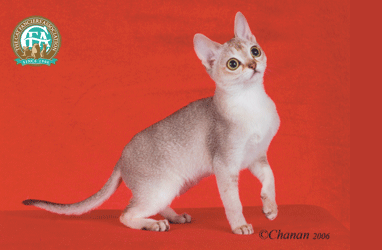
歷史起源
原產於新加坡, 本是浪跡於新加坡街頭巷尾,
外 形
該貓原在至今所知的貓中, 這種貓是家貓中體型最小、最輕的品種, 成年雌貓體重還不到三千克。 雌貓的體重一般在1.8—2.7千克以下, 雄貓在2.7克以上。 很可能是由於生存條件極差所造成的。 屬短毛類。 體型為中等粗短胖型, 肌肉發達有力, 動作敏捷有彈性。 該貓頭圓, 鼻短, 下頜較大。 耳大呈尖狀。
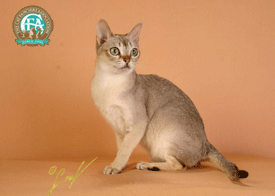
特 點
新加坡貓適應性強, 生性老實厚道, 對主人分外忠誠, 對陌生人也無戒備之心, 更不欺生。 性格溫順, 安靜, 對主人忠誠, 對人無戒備心, 是很理想的伴侶動物。
CFA官方關於新加坡貓的品種簡介
Breed Profile: Singapura
Singapura is the Malaysian word for Singapore. The streets of Singapore are the origin of this breed. They are nature's combination of both the ticked coat pattern and the dark brown color, both of which are indigenous to South East Asia. The breed was brought into the U.S. in the early 1970s by Hal and Tommy Meadow, expatriates moving home. Early Singapura breeders quickly went to work to establish purebred characteristics such as breeding true, uniformity of appearance, and above all, health and disposition. This careful development of the breed has lead to small numbers of diversified pedigreed cats but one that is widely desired and accepted. Today the breed is worldwide and recognized by most registration associations. In CFA, Singapuras were accepted for registration in 1982 and for championship competition in 1988.
The Singapura's disposition is that of a "pesky people cat," an extroverted, curious, playful but nondestructive cat that insists on helping you with everything. They are very intelligent and interactive with people and remain so even into old age. Disposition is one of their most endearing attributes. If you want a cat geared to "four on the floor," don't consider owning a Singapura.
The Singapura is a smaller than average, shorthaired cat with noticeably large eyes and ears. On first impression, you might think you were looking at some new color of Abyssinian. The pattern is nearly the same but on closer inspection you will note that the only other similarity is the large ears, everything else is different. The light beige coloring is unique and thought by some to be similar to cougars. The tail is normal length, the feet are very small, the body is smaller, of a medium length and should be muscular. Eyes may be hazel, green or yellow but mature eye color is not predicable in kittens. Many veterinarians seeing a Singapura for the first time are apt to think something might be wrong with the kitten since it is so small. The Singapura is slow to develop and will not attain its full size until about 15 to 24 months of age. There isn't much difference in size between mature males and females, females weighing approximately 5 to 6 pounds and males 6 to 8 pounds.
A pet quality cat will usually have cosmetic faults that make it unsuitable for showing or breeding. Some of the most common faults are head length (too long), eyes too close together, visible or non-visible tail faults, lack of complete nose-liner (the dark line around the nose leather), and markings on the outside of the front legs which should be clear of any markings. Additionally, only a limited number of male cats can be used in the breeding programs so only the best male kittens are retained for breeding. Regardless of the reason for a Singapura to be offered as a pet, you will find this cat's intelligence, playfulness and unique appearance captivating from the first time you meet one.
Pricing on Singapuras usually depends on type, applicable markings and bloodlines distinguished by Grand Champion (GC), National, National Breed and/or Regional winning parentage (NW, BW, RW) or of Distinguished Merit parentage (DM). The DM title is achieved by the dam (mother) having produced five CFA grand champion/premier (alter) or DM offspring, or sire (father) having produced fifteen CFA grand champion/premier or DM offspring. Usually breeders make kittens available between twelve and sixteen weeks of age. After twelve weeks, kittens have had their basic inoculations and developed the physical and social stability needed for a new environment, showing, or being transported by air. Keeping such a rare treasure indoors, neutering or spaying and providing acceptable surfaces (e.g. scratching posts) for the natural behavior of scratching (CFA disapproves of declawing or tendonectomy surgery) are essential elements for maintaining a healthy, long and joyful life.
